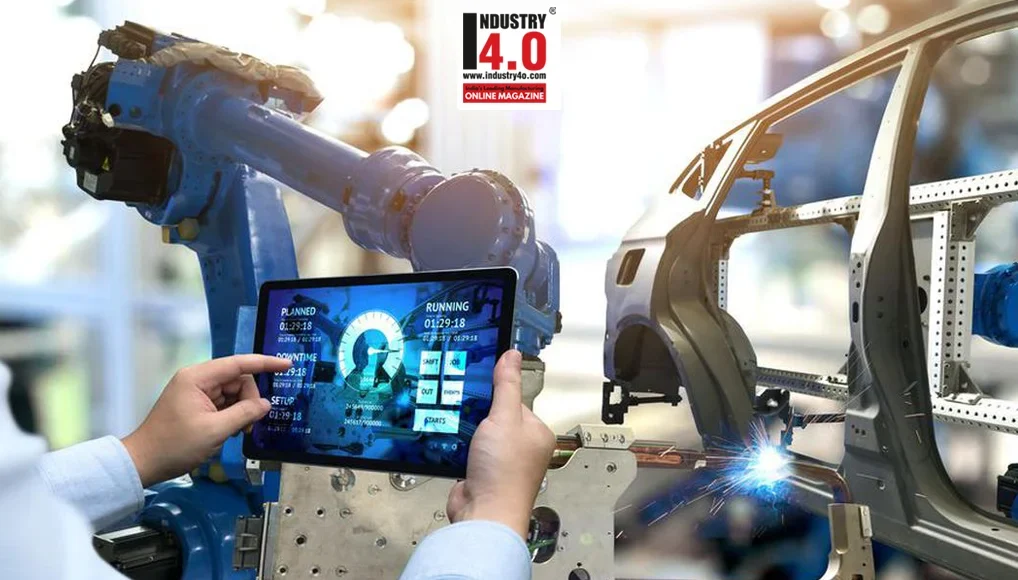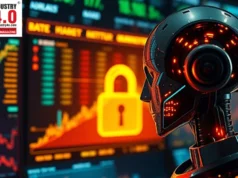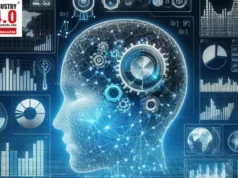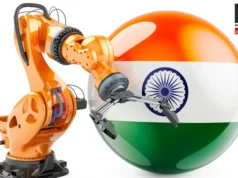Digitization of the Manufacturing Industry: No longer a luxury, but a necessity
Introduction :
To see is to believe. Visuals are a powerful medium. Virtual technologies provide the immersive, almost real-life-like experience which opens new opportunities for improvement of all stages involved in manufacturing. While this helps manufacturers tackle the challenges unleashed by changing requirements and attain objectives, harnessing these technologies requires a careful, patient, and nuanced approach.
Digital Trajectory of the Manufacturing Industry
GE Renewable Energy and software designer, Upskill recorded a 34.5% productivity hike after guiding a worker equipped with augmented reality (AR) and smart glasses when wiring a wind turbine. The improvement was immediate!
Aerospace and defence equipment major, Lockheed Martin boosted its engineering accuracy to approximately 96% by employing virtual reality (VR) for making the famed F-35 aircrafts. Here again, VR saved valuable production time.
FIVE stands for Ford Immersive Vehicle Environment, Ford Motors’ self-developed VR technology for the design and production of vehicles inside a virtual setting. Engineers develop virtual models of proposed vehicles and transfer the in-depth design to the model so as to experience first-hand the interiors of the vehicle in various settings.
These and many more examples are a result of the manufacturing industry’s attempts to stay competitive amidst changing objectives viz. building top quality innovative products with significant productivity, efficiency, safety, and economy improvements, and corresponding cuts in wastage. The industry has to fulfil these while dealing with challenges unleashed by labour shortages, skills deficit, and supply chain limitations.
As a result, digitization of the manufacturing industry is no longer a luxury. It is a necessity as we move towards Industry 4.0 characterized by three wide technology trends – connectivity, flexible automation, and intelligence. In essence, Industry 4.0 technologies provide a Cyber Physical System (CPS) that blend real world manufacturing operations with the digital world of computers and networks to achieve the stated goals.
Role of Augmented Reality (AR) & Virtual Reality (VR)
The examples mentioned above clearly prove the efficacy of virtual technologies. At the root of the utility of such tools is the immersive environment they provide. This is the result of cameras, depth sensors, software, and motion detectors that empower users to interact with people and machines at other locations as if they are face-to-face.
Extended Reality (XR), which is the combination of virtual, augmented, and mixed reality with those immersive technologies that will be developed in the future, eliminate or lower the barriers imposed on manufacturing by the physical world, time availability, and organizational workflow.
Two ways via which XR does this are:
Realistic Interactions:
Sharing was earlier limited to what could be exchanged via videos or documents – videos, images, drawings, notes, calculations and the like. With the immersive environment, interactions between people and those between people and systems are equivalent to face-to-face dealings. All stakeholders gain better understanding without having to travel.
Virtual Trial & Error:
AR and VR deliver considerable improvement in time, cost, and quality as engineers and designers can investigate alternative virtual designs. The immersive environment helps better investigation. Making physical prototypes for such trials and errors is expensive and time consuming.
Virtual technologies have a considerable positive impact on the following facets of the manufacturing industry:
Design & Development:
Teams fine tune concepts and design at early stages via AR and VR. Through better comprehension of functionality and defects in advance, manufacturers can avoid costly and time-consuming reworks.
Such proactive understanding is particularly essential when developing innovative systems as well as fresh methods to build such systems. VR has already helped automotive companies reduce the duration from initial design to physical modelling to days from weeks.
Animated simulations, possible with AR and VR, help better visualization of the product or process being developed for everyone. This is important because only seasoned engineers and technicians understand complex 2D drawings and 3D models. With better clarity, virtual technologies bring all stakeholders on the same page.
Planning of Factory Layout & Production:
Optimized work flow via better relative positioning of various elements viz. machines, tools, and personnel maximizes productivity and efficiency that are crucial to the success of mass manufacturing.
Virtual technology allows virtual checks of the layout efficacy before implementing it in the real, physical world. Not just of the work flow but also of related aspects such as ergonomics and access for repair or maintenance. This speeds up production. It also reduces the time and expenses that would be otherwise needed to change the actual physical layout.
Such virtual 3D mapping means designers can more realistically evaluating the effect of lighting, support pillars, conduits, and HVAC on the production operations and workflow. The same applies for examining the impact of proposed installations and changes.
Training:
AR and VR simulate all potential environments and processes, making them invaluable tools for training and education. This provides a sense of what is actually happening on the shop floor – noise, lights, actions and the likes.
Next, smart AR glasses in combination with graphics, project video, and text provide visual, step-wise instructions to the trainee for carrying out various operations.
As a result, trainees get a sense of the real shop floor. And by doing this in three dimensions, virtual technologies score a realistic and interactive point over two dimensional books and training manuals. This helps faster and more effective learning, thereby speeding up the on-boarding process.
Reeling as the manufacturing industry is under years of skills and labour shortage, the importance of such rapid and integrated transfer of knowledge can never be overstated. Besides, such immersive training and working keeps employees engaged.
Safety:
AR provides trainees with hands-on know how of the shop floor. With VR, factory managers can virtually model the factory layout, production, processes, and assembly lines and proactively pinpoint hazardous situations.
The same applies for virtually evaluating the ergonomics of the workstation to avoid injuries that develop over time. Goggles with cameras as well as sensors for depth and motion give an almost real view of the working environment.
Industrial equipment maker Gabler checks its production lines for possible safety issues using VR. Ford Motors similarly improves the safety of its vehicles by utilizing VR to simulate road and weather scenarios from the driver’s point of view.
Installation, Maintenance, Repair & Troubleshooting:
It’s not just the trainees that benefit from the immersive and tinker-able environment. Regular workers also gain from step-by-step visual instructions available for troubleshooting, installation, maintenance, repair, and related operations.
Better and faster audio-visual guidance is particularly useful for troubleshooting because fixing the system is more urgent. Ergonomics and access for repair and maintenance is already validated at the design stage.
Inventory Management:
Handling inventory is not limited to warehouses alone. It is an integral part of manufacturing shop floors as well. Besides, warehouses are part of the larger manufacturing supply chain.
Storage and retrieval of the required item has to be fast and accurate. AR allows a supervisor sitting in the same plant or different one to guide the inventory worker to the precise location of the item. The worker will not get confused.
A pilot study by logistics firm DHL demonstrated a 25% efficiency improvement after using AR and smart glasses for rapid and precise inventory pick up. Other participants in the study, performed in a Netherlands warehouse, were Ricoh, DHL’s client, and Ubimax, an expert in wearable computing systems. Order picking is among the most error prone, repetitive, and costly process in logistics.
Roadblocks to Adoption
Despite the obvious advantages, immersive technologies face barriers to rapid adoption. These concerns arise from doubts related to the utility of the technology, its cost, the multifaceted efforts needed to implement it and keep it running, and the associated intellectual property, privacy, and security questions.
Adoption roadblocks include:
- Technical Barriers: Include the lack of understanding on how to implement the technology on an enterprise wide scale. Besides, there are intellectual property (IP) concerns because the IP of an enterprise is being delivered to external devices.
- Safety & Privacy Concerns: AR gadgets can lower situational awareness and cause discomfort. Privacy concerns result from such technologies recording the video and audio of a person and how he or she executes a certain task.
- Returns Uncertainty: Stems from the deficient or excessive confidence that business managers have on the technology. Managers may be similarly ill informed about the total required capital, advantages other than time and error reduction, and the involved operational or recurrent costs.
- Resistance to Change: Is a human factor that originates from the apprehensions on stepping out of the comfort zone.
- System Integration Issues: Does the immersive technology integrate with existing systems such as CRM, IoT, PLM, or ERP?
- Content Challenges: The factory may not be ready with content such as sequential instructions that is necessary for implementing AR. Execution of AR also requires 3D modelling of existing products, which is a costly, lengthy, and complex process.Experts suggest a thorough and contextual understanding of all the involved aspects followed by the inclusion of relevant stakeholders and allocation of sufficient funds as the key to successful execution.
Finally
Teething troubles are common to all new technologies. Over time, these technologies expand their utility and assume more user friendly colours. And once they demonstrate their capacity to deliver on the objectives of manufacturing while addressing the ecosystem of challenges, the market starts adopting them at an unprecedented pace.
About the author:
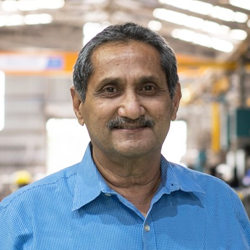
Dr. Mahesh Wagle
Co-Founder & Director
Cybernetik
Mahesh Wagle is a Co-Founder & Director of Cybernetik – an industrial automation company that has been undertaking the designing, building, and end-to-end installation of turnkey automation systems for the Food, Agro, Pharmaceutical, and Chemical industries for over three decades.
Mahesh’s passion for engineering and vision for the future of automation systems enabled him to co-found Cybernetik Technologies in 1989, a period when the automation market in India was still at a fledgling stage. As a technical specialist, he was among the major minds behind the development of several path breaking processes and innovations.
With Mahesh being one of the major driving forces behind Cybernetik’s quest for innovation, the organization continues to broaden globally, with three international offices in Vietnam (for Southeast Asia), Dubai (for Middle East and Africa) and United States (for North America). It has four factory units and 2 design offices in India, with over 380 employees.
Prior to founding Cybernetik, Mahesh held leadership roles in Keller Technology Corporation, Tonawanda, NY and Buffalo Design Research Pvt. Ltd., Pune. He is an alumnus of the prestigious Indian Institute of Technology (IIT)-Madras, and the University of Buffalo in New York.
Cybernetik can be contacted at:
Cybernetik’s social media links
FaceBook | YouTube | Instagram | LinkedIn

